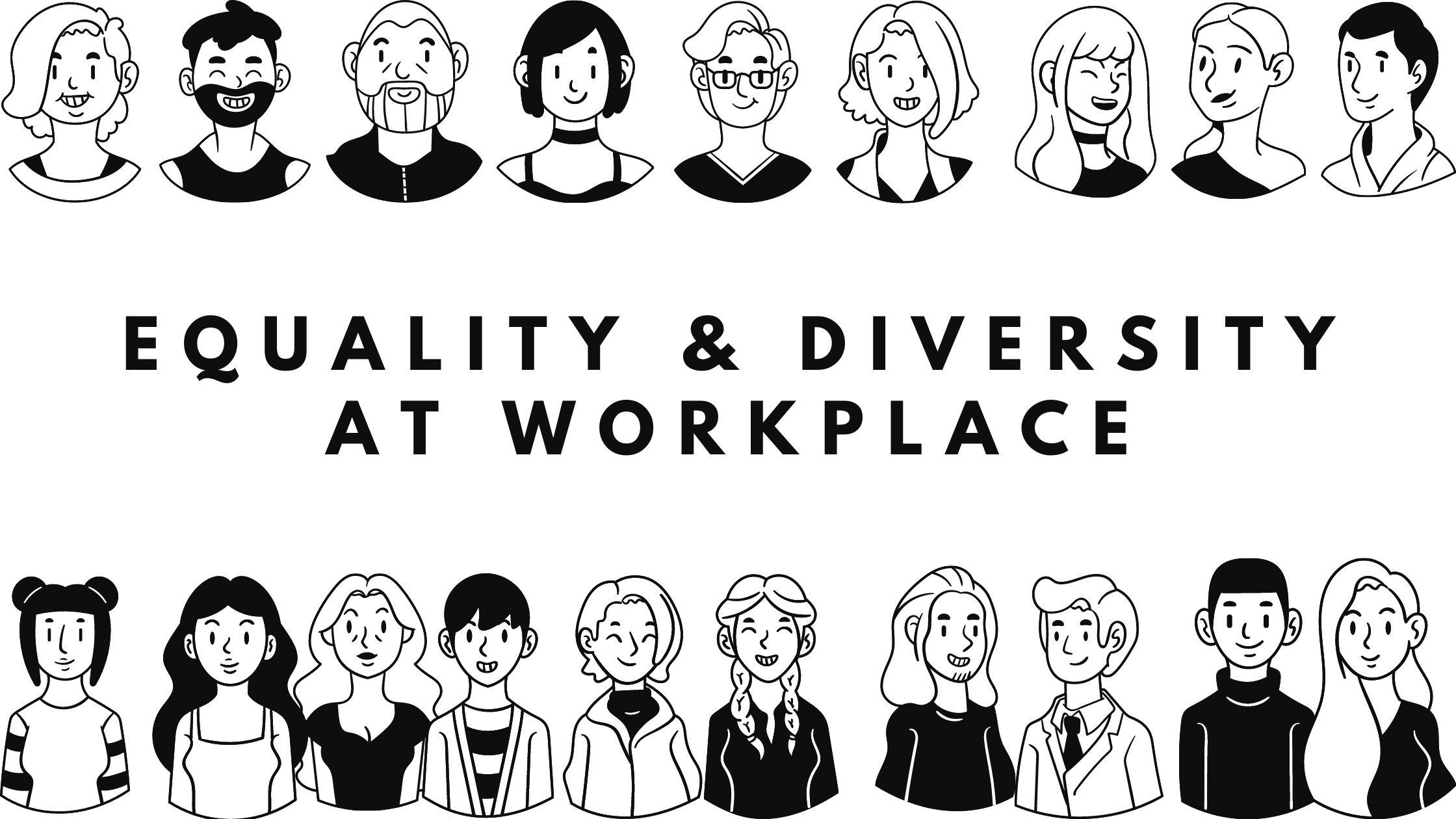In the past few years, equality and diversity have come under the spotlight more intentionally and actively than ever before. Workplace discrimination remains the main concern for UK businesses. Under the Equality Act 2010, companies have a duty to their workforces to guard them against any form of harassment, judgment, and mistreatment in the workplace.
Though, we know that workplace distinction is still a major worry, crosswise all industry segments. Everyone deserves respect in a specialized environment. Equality and diversity in the office mean a lot of things. They are about regarding your colleagues for their age, gender, incapacities, race, belief, sexual orientation, and more.
The notable journalism on gender pay gaps, the MeToo Movement, and most recently the Black Lives Matter Movement. All these actions have encouraged farseeing businesses to execute equality and diversity programs in the workplace. Hiring people from different upbringings broadens the variety of thinking that takes place in your office.
The investigators pointed out that creating a company character where you stimulate and inspire your employees to convey their unique opinions needs to go cohere with the diversity of your people. Creating an inclusive culture includes everyone, but a vital element is that senior management delivers guidance and representing why it is good for the organization.
A workforce encouraging fairness, diversity, and presence can help:
- Make it more Positive
- Keep Workers Happy and Interested
- Advance Ideas and Problem Resolving
- Entice and Retain Good Staff
- Avert serious matters arising such as harassment and discrimination
- To better aid a varied range of customers
To promote equality, diversity, and inclusion in the workplace and to tackle workplace discrimination the organizations must implement some practical steps. Some of which are discussed below:
1. Identify and Prevent Unconscious Bias
No matter how progressive or open mind people think they are, unconscious bias is present in everyone. A positive way to tackle this is to first acknowledge that you have biases then understand how it affects your behavior, decision & attitude.
Because if we don’t acknowledge unconscious biases about ourselves, then it is impossible to address them. You can take part in tests to become aware of your own biases. Such as the Implicit Association Test (IAT), once you know your results, you know which areas to focus on more heavily.
2. Be Careful with the Language
The language we use has affected influence on how included people feel. Equality and Diversity should be taken into deliberation when communicating with others in the workplace. Ensure that all business documentation uses language that is suitable for a varied range of individuals.
Professionally treat people. One should keep in mind the professional role of the person they are interacting with. People have a clear empathetic of where the lines are drawn when it comes to aggressive or offensive language.
3. Watch Out for Indirect Discrimination
To promote equality, diversity, and inclusion in the workplace, watching out for discrimination, direct or indirect is significant. Indirect judgment is when a working plan that works fine for everyone else, puts certain groups of persons in a trouble.
Make sure that your company rules don’t unintentionally put some individuals at a disadvantage. For example, working with personal protective equipment that is precisely designed for men when used by women can put them in danger as the sizes of the equipment may vary.
4. Offer all Staff Diversity and Inclusion Training
Training is the key module in supporting equality and diversity in the office. It helps to promote awareness and offers an understanding of the matters across an extensive variety of topics.
By giving a correct education to your employees provides the means to deal with subtle substances such as unconscious biases, linguistic, and conduct. It can also ease additional dialogue on how to advance workplace culture and inclusion.
You can either organise classroom pieces of training or opt for online e-learning courses that focus on equality, diversity and inclusion in the workplace.
5. Be Aware of Religious Events
To celebrate religious proceedings also endorse a sense of equality in the workplace. Don’t just emphasize the leading breaks or events in your country, such as Christmas.
If you have a varied group of individuals working in your organization, then you should inspire them to rejoice in other events in the workplace too. It is a decent idea to encourage staff to be aware of spiritual practices.
Practical Benefits of Promoting Equality and Diversity in the Workplace
Embracing equality and diversity has a wide array of benefits for both the organization as a whole and to employees and colleagues. Applications of equality, diversity, and inclusion in the workplace lead to a stronger working relationship between staff and customers.
Colleagues will feel respected by you and as part of the organization. A diverse organization will also maintain a skilled workforce and help increase productivity. In the end, workplace equality is not just about implementing procedures to stop workplace discrimination.
That’s the easy bit. We all have to actively promote equality and inclusion, ensuring people are free to focus on what matters most – making a company the best it can be.
Summary
Equality and Diversity in the office remains a key worry for industries. It has come under the attention more actively than ever before. To endorse equality, diversity, and inclusion at work, it is vital to treat every individual justly at work. Everyone deserves admiration in a professional environment, and the best way likely to do this so is by accepting the values of equality and diversity.
This is what is clarified in-depth, in this piece of writing that how people differ from one another working together. Therefore, it is the accountability of the employer to encourage equality at work. So, no one feels inferior or superior to others.


